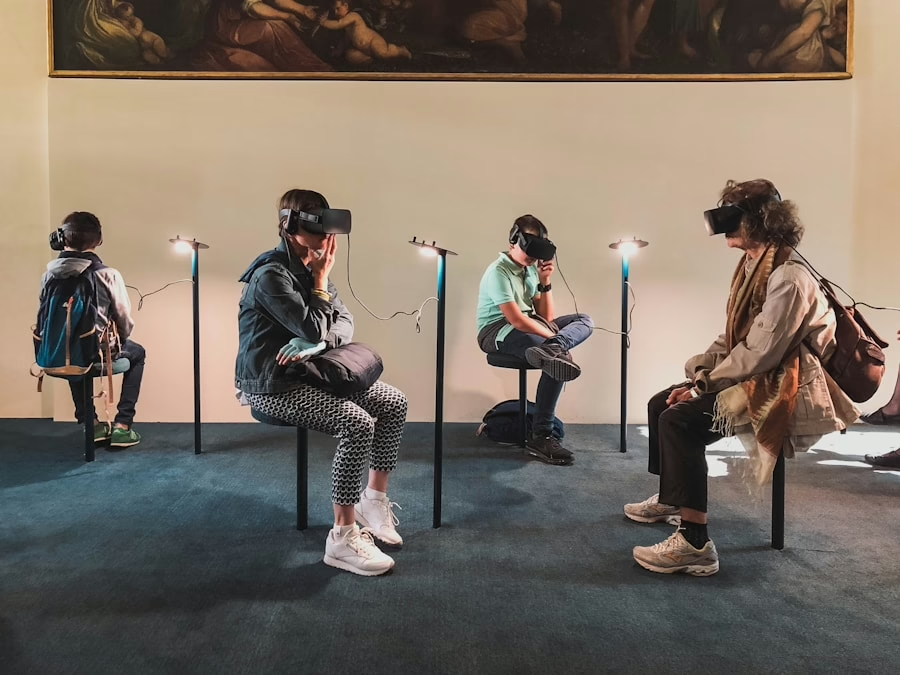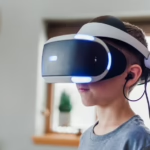Artificial Intelligence (AI) and Machine Learning (ML) have been at the forefront of technological advancements in recent years. AI, the simulation of human intelligence processes by machines, has seen significant progress in various domains such as healthcare, finance, and transportation. Machine Learning, a subset of AI that enables systems to learn and improve from experience without being explicitly programmed, has revolutionized data analysis and decision-making processes.
One of the most notable advancements in AI and ML is the development of deep learning algorithms, which have significantly improved the accuracy of tasks such as image and speech recognition. Furthermore, AI and ML have also made significant strides in natural language processing, enabling machines to understand and generate human language. This has led to the development of virtual assistants and chatbots that can interact with users in a more human-like manner.
Additionally, AI-powered recommendation systems have become ubiquitous in online platforms, providing personalized suggestions for products, content, and services. As AI and ML continue to evolve, their applications are expected to expand further, impacting various industries and reshaping the way businesses operate.
The Rise of 5G Technology and Its Impact on Connectivity
The advent of 5G technology has ushered in a new era of connectivity, promising faster data speeds, lower latency, and greater capacity for wireless networks. With its potential to support a massive number of connected devices simultaneously, 5G is set to enable the widespread adoption of Internet of Things (IoT) devices and applications. This will not only revolutionize consumer experiences but also drive innovation in industries such as healthcare, manufacturing, and smart cities.
Moreover, 5G technology is expected to fuel advancements in augmented reality (AR) and virtual reality (VR) applications, as the high-speed, low-latency connectivity provided by 5G networks will enhance the immersive experiences offered by these technologies. Additionally, the deployment of 5G networks is anticipated to accelerate the development of autonomous vehicles and smart transportation systems, paving the way for safer and more efficient mobility solutions. As 5G continues to roll out globally, its impact on connectivity and technological innovation is poised to be profound.
The Evolution of Cybersecurity Measures in Response to Emerging Threats
The evolution of technology has brought about new cybersecurity challenges, prompting the continuous development of advanced security measures to combat emerging threats. With the increasing sophistication of cyber attacks, organizations are leveraging technologies such as artificial intelligence and machine learning to enhance their threat detection and response capabilities. These technologies enable proactive identification of potential security breaches and help in mitigating risks in real time.
Furthermore, the adoption of Zero Trust security frameworks, which assume that every access attempt is a potential threat until proven otherwise, has gained traction in the cybersecurity landscape. This approach emphasizes strict access controls and continuous monitoring to prevent unauthorized access to sensitive data and systems. Additionally, the rise of quantum computing poses both opportunities and challenges for cybersecurity, as quantum-resistant encryption methods are being developed to safeguard data from potential quantum-based attacks. As cyber threats continue to evolve, the evolution of cybersecurity measures remains crucial in safeguarding digital assets and privacy.
The Growing Influence of Internet of Things (IoT) in Various Industries
The Internet of Things (IoT) has emerged as a transformative force across various industries, enabling the interconnectivity of devices and systems to gather and exchange data. In healthcare, IoT devices such as wearable health monitors and remote patient monitoring systems have revolutionized patient care by providing real-time health data and enabling proactive interventions. Similarly, in manufacturing, IoT-enabled sensors and devices have facilitated predictive maintenance, optimized production processes, and improved overall operational efficiency.
Moreover, the integration of IoT in smart cities has led to advancements in urban infrastructure management, energy conservation, and public safety. Smart meters, traffic monitoring systems, and environmental sensors are just a few examples of IoT applications that are driving sustainable urban development. As IoT continues to proliferate, its impact on industries such as agriculture, retail, and logistics is expected to be substantial, leading to increased automation, data-driven decision-making, and enhanced customer experiences.
Advancements in Virtual and Augmented Reality Applications
Virtual Reality (VR) and Augmented Reality (AR) technologies have witnessed significant advancements in recent years, expanding their applications beyond gaming and entertainment. In the realm of healthcare, VR is being utilized for medical training simulations, pain management therapies, and even surgical planning. AR, on the other hand, has found practical use in fields such as maintenance and repair operations, where technicians can overlay digital instructions onto physical equipment for guidance.
Furthermore, the integration of VR and AR in education has transformed traditional learning methods by providing immersive experiences that enhance student engagement and comprehension. In architecture and design, these technologies have enabled professionals to visualize and present their concepts in a more interactive and realistic manner. As VR and AR continue to evolve, their potential for revolutionizing training, education, design, and various other industries is becoming increasingly evident.
The Role of Blockchain Technology in Revolutionizing Business Processes
Blockchain technology has garnered significant attention for its potential to revolutionize business processes by providing secure, transparent, and decentralized systems for transactions and data management. The use of blockchain in supply chain management has enabled end-to-end traceability of products, reducing fraud and ensuring the authenticity of goods. In the financial sector, blockchain-based cryptocurrencies have disrupted traditional payment systems by offering faster and more cost-effective cross-border transactions.
Moreover, blockchain’s immutability and tamper-resistant nature make it well-suited for applications such as digital identity management and secure voting systems. Smart contracts, self-executing contracts with the terms directly written into code, have also emerged as a key innovation enabled by blockchain technology, streamlining contract execution processes across various industries. As blockchain continues to evolve, its potential for transforming business operations through increased efficiency, transparency, and security remains a focal point of interest for organizations across diverse sectors.
The Future of Cloud Computing and its Implications for Businesses and Consumers
Cloud computing has become an integral part of modern IT infrastructure, offering scalable resources, cost-effective solutions, and flexibility for businesses and consumers alike. The shift towards hybrid and multi-cloud environments has enabled organizations to leverage a combination of public and private cloud services to meet their specific needs while maintaining control over sensitive data. Additionally, serverless computing models have gained popularity for their ability to abstract infrastructure management tasks from developers, allowing them to focus on building and deploying applications without worrying about underlying infrastructure.
Furthermore, the emergence of edge computing has extended the capabilities of cloud services by enabling data processing closer to the source of data generation. This is particularly beneficial for applications requiring low latency or offline operation, such as Internet of Things (IoT) devices or real-time analytics. As cloud computing continues to evolve with advancements in areas such as containerization, serverless architectures, and edge computing technologies, its implications for businesses and consumers are poised to drive further innovation and efficiency in the digital landscape.
In conclusion, the rapid evolution of technology across various domains such as artificial intelligence, connectivity, cybersecurity, IoT, virtual reality, blockchain, and cloud computing is reshaping industries and driving innovation at an unprecedented pace. As these tech trends continue to advance, their impact on businesses and consumers will be profound, ushering in new opportunities for growth, efficiency gains, and transformative experiences across diverse sectors. Staying abreast of these developments will be crucial for organizations seeking to harness the full potential of these technological advancements in an increasingly digital world.




